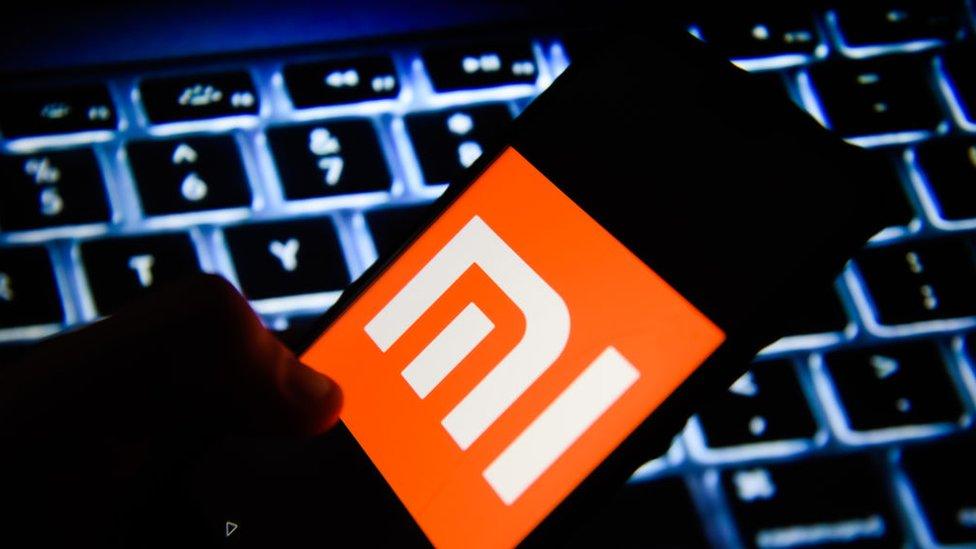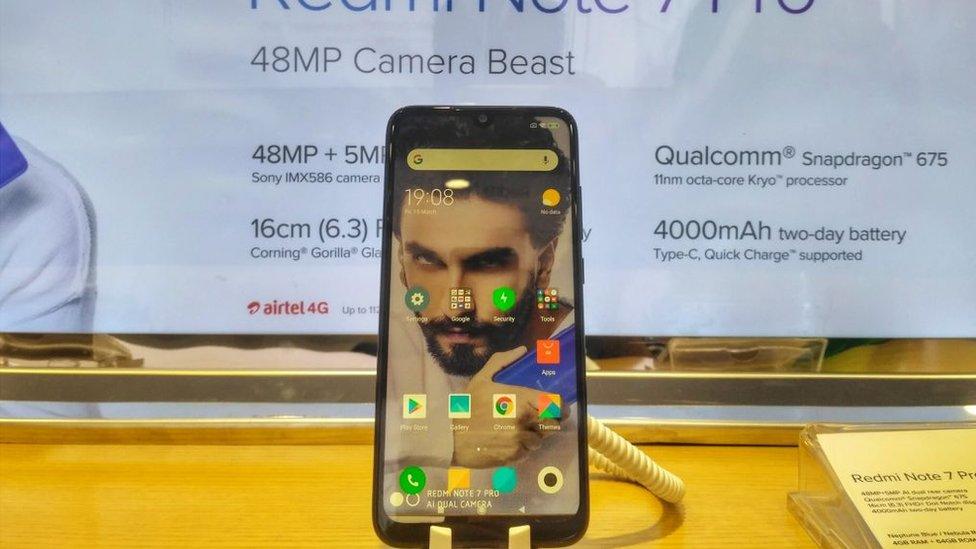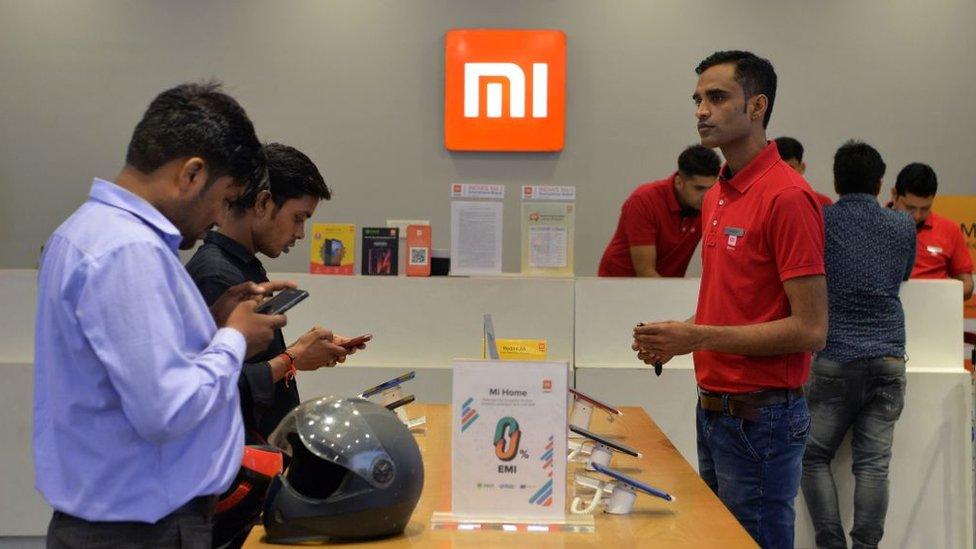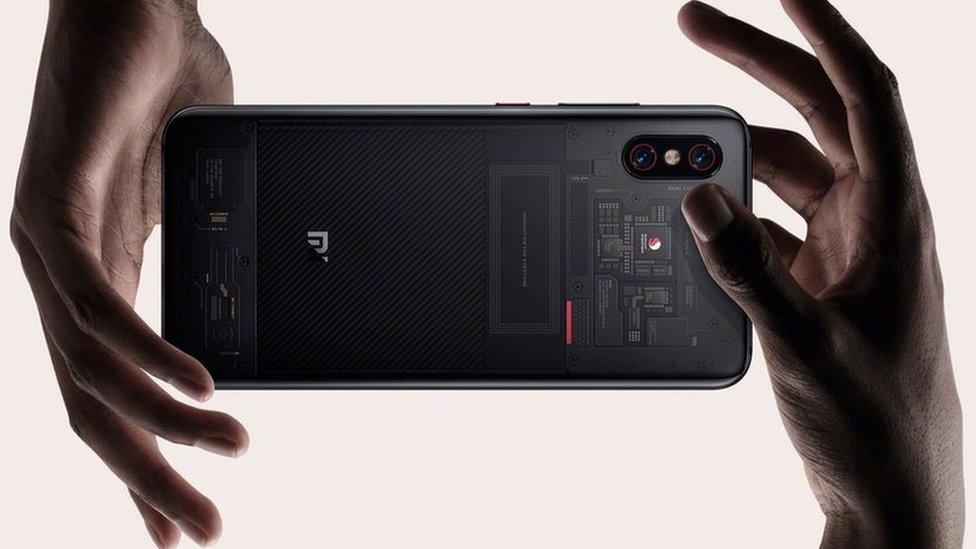Xiaomi: The Chinese brand dominating India's smartphone market
- Published

Xiaomi entered the Indian market in 2015
Chinese tech company Xiaomi has come to dominate India's massive low-cost smartphone market in a few short years. The BBC's Krutika Pathi talks to tech experts to understand just how that happened.
Fifteen minutes - that's how long it took for Xiaomi's latest smartphone, Redmi Note 8, to sell out once it went on a "flash sale" online on Monday.
But this isn't unusual among the company's products, and is a key part of its India strategy.
"You've got to register online first and then keep an eye out for these flash sales - then you pounce," Mala Bhargava, a technology journalist, told the BBC.
While Xiaomi's mobiles are also available offline at stores, most new models are first sold online, which accounts for more than half of their sales.
"The online community the brand has amassed is astonishing," Jayanth Kolla, partner at telecom research firm Convergence Catalyst, said.
When Xiaomi entered the Indian market in 2015, Mr Kolla explained, it did not invest in brick and mortar stores. Instead, they focused on selling their products online. This kept distribution costs low and that made the phones cheaper.
"Their heavy online presence also helped them gain a cult-like following in India, allowing Xiaomi to cement itself as a serious player in the country's fickle smartphone market," he added.
Chinese companies now control more than half of India's burgeoning smartphone market - with more than 450 million users, it's approximately worth $8bn (£6bn).
And Xiaomi, once referred to as the brand behind "the poor man's iPhone", is leading the pack - it owns 28% of the Indian market. That's a steep rise for a company that had just 3% of the market in 2016.

The company is the number one smartphone brand in India
"It started by putting out phones that were iPhone lookalikes," Ms Bhargava said. "Their first crop of phones was constantly compared to the Apple product and the company even got criticised for it."
But it was not just that Xiaomi's phones looked like iPhones. They were also packed with features and hardware that made Indians feel that they were getting more bang for their buck.
Its flagship Redmi range of phones, for instance, include a 64-megapixel camera but are affordable, starting at 9,999 rupees ($141) and going up to 17,999 rupees ($254).
Indian consumers quickly gravitated towards the phones - which gleamed like iPhones but at one-third the price.
"Everyone wants an iPhone, but will settle for a lookalike until they can afford the real thing," Mr Kolla said, adding that his firm's research has found that Indian consumers often upgrade to a "premium smartphone", most likely an Apple or Samsung mobile, as soon as their disposable income rises.
"The way they approached their pricing helps explain their popularity in India - consumers were getting better features than before but at rock-bottom prices," Mr Kolla said.
Another reason for Xiaomi's rise, as well as that of other Chinese smartphone makers, was the slow collapse of India's home-grown mobile brands due to the lack of 4G capability.
"There was a time when you had Indian brands like Micromax leading the market," Neil Shah, a technology analyst at Counterpoint Research, said. "But everything changed around 2016 and 2017 when 4G was introduced in India."
By the time 4G arrived in India, Chinese companies had already managed to successfully outfit cheap phones with 4G tech, and were selling them back home.
"This made it much easier for them to transition their mobiles from 3G to 4G overnight in India. It's what ultimately killed the Indian brands," Mr Shah said.
WATCH: Xiaomi's double-folding smartphone
But competition for the Indian market remains fierce and no one company has dominated it for too long.
Xiaomi's share of the market has not grown from 28% since last year, signalling a plateau. Korean tech giant Samsung is also close behind at 25%; and newer Chinese brands like Realme are also becoming more popular among Indian users.
This could explain why Xiaomi dipped its toes in the premium smartphone market earlier this year, with a new range of phones called the K-20 series.

Its flagship Redmi phones are hugely popular in India
"A few years ago, the premium market was about three to four percent of the Indian smartphone market. This has now grown," Xiaomi's India director, Manu Jain, said in an interview with the Hindu newspaper in July.
He added that the company had set its sights beyond the affordable smartphone market.
But Xiaomi's prices, which range from 20,000 to 30,000 rupees ($282 to $423), didn't put it in the league of the iPhone or Galaxy smartphones, which sell for considerably more.
"It's neither here nor there," Mr Shah said.
According to Mr Kolla, the Chinese company needs to "keep pushing its limits" if it wants to sit alongside Apple and Samsung.
"If they don't innovate and bring new products, they'll be stuck selling cheaper phones for a while."
- Published8 November 2018

- Published23 January 2019
